
Chem Catalysis
Scope & Guideline
Unleashing the potential of chemistry for global challenges.
Introduction
Aims and Scopes
- Catalytic Mechanisms and Pathways:
Research exploring the fundamental mechanisms of catalytic reactions, including detailed studies on reaction pathways, intermediate species, and the impact of various conditions on catalytic efficiency. - Electrocatalysis and Photocatalysis:
Investigation into electrocatalytic and photocatalytic processes, focusing on the development of materials and systems for energy conversion and environmental remediation, such as CO2 reduction and water splitting. - Biocatalysis and Synthetic Biology:
Studies that leverage enzymes and biological systems for catalysis, aiming to enhance the efficiency and sustainability of chemical synthesis through biocatalytic approaches. - Materials Design and Engineering:
Research dedicated to the design and synthesis of novel catalytic materials, including metal-organic frameworks, single-atom catalysts, and bimetallic systems, with specific focus on optimizing their performance for various reactions. - Machine Learning and Computational Catalysis:
Utilizing computational methods and machine learning techniques to predict catalytic behavior, optimize catalyst design, and analyze complex reaction networks. - Sustainable and Green Chemistry:
Focus on developing catalytic processes that minimize environmental impact, including waste reduction, energy efficiency, and the utilization of renewable resources.
Trending and Emerging
- Sustainable Catalysis and Circular Economy:
A growing emphasis on sustainable practices in catalysis, including the development of processes that promote recycling and valorization of waste materials, such as plastics and biomass. - Machine Learning in Catalysis:
The application of machine learning techniques to predict catalytic performance, optimize reaction conditions, and design new catalysts is rapidly gaining attention, reflecting the integration of computational methods into experimental catalysis. - Electrocatalysis for Energy Conversion:
Research focused on electrocatalytic processes for energy conversion, particularly in the context of renewable energy sources, CO2 reduction, and hydrogen production, is becoming increasingly prominent. - Photocatalytic Applications:
Significant interest in photocatalysis, particularly for environmental applications such as pollutant degradation and hydrogen production from water, is emerging as a key area of research. - Single-Atom and Bimetallic Catalysis:
There is a notable trend toward the exploration of single-atom and bimetallic catalysts, which offer enhanced activity and selectivity due to their unique electronic properties and structural characteristics. - Biocatalysis and Enzyme Engineering:
Increasing interest in the engineering of enzymes for specific catalytic functions and the application of biocatalysis for sustainable synthesis is a growing theme in the journal.
Declining or Waning
- Traditional Homogeneous Catalysis:
Research related to traditional homogeneous catalytic systems has become less frequent as the field shifts towards heterogeneous and more sustainable catalytic processes. - Conventional Metal Catalysts:
There is a noticeable reduction in studies focusing solely on conventional metal catalysts without innovative modifications or the incorporation of new materials and technologies. - Basic Reaction Optimization Studies:
Simplistic studies aimed at optimizing known catalytic reactions without novel insights or advancements are becoming less prevalent, as the journal seeks more innovative and transformative research. - Single Reaction Focus:
Papers that concentrate on a single catalytic reaction without broader implications or connections to larger catalytic themes are declining in favor of more integrative and multi-faceted studies.
Similar Journals

Catalysts
Connecting Researchers through Open Access Catalysis InsightsCatalysts is a leading academic journal in the field of catalysis, published by MDPI since 2011 and well-regarded for its commitment to open access publishing. Based in Switzerland, this journal delivers innovative research and reviews that span various aspects of catalysis, from heterogeneous and homogeneous catalysis to the development of novel catalytic systems. With a commendable impact factor and a notable Q2 ranking in both Catalysis and Physical and Theoretical Chemistry categories, Catalysts plays a critical role in advancing the scientific discourse in these fields. The open-access model ensures that all research articles are readily accessible to researchers and professionals worldwide, fostering collaboration and accessibility to high-quality scientific literature. As the journal continues to publish cutting-edge studies up to its convergence in 2024, it remains an essential resource for anyone involved in catalysis research, from seasoned professionals to emerging scholars.
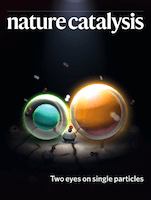
Nature Catalysis
Catalyzing Breakthroughs in Biochemical EngineeringNature Catalysis is a premier academic journal published by NATURE PORTFOLIO, specializing in the rapidly evolving fields of biochemistry, bioengineering, and catalysis. With its ISSN of 2520-1158, this journal has emerged as an invaluable resource since its inception in 2018, contributing significantly to interdisciplinary research. Recognized for its high impact within the scientific community, it holds a prestigious Q1 ranking across multiple categories, including Biochemistry, Process Chemistry and Technology, and Catalysis as of 2023, illustrating its influence and authority in the field. Researchers will find impactful articles characterized by rigorous peer review processes that push the boundaries of knowledge in catalysis and its applications. While the journal operates with traditional access models, it remains accessible to a global audience interested in innovative research findings that promise to shape future developments in these critical areas. Positioned at the forefront of contemporary scientific inquiry, Nature Catalysis invites contributions that expand upon catalytic processes and technologies, which are crucial for advancing both fundamental science and applied engineering.
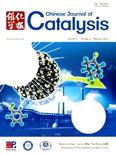
Chinese Journal of Catalysis
Advancing Catalytic Science for a Sustainable FutureWelcome to the Chinese Journal of Catalysis, a prestigious publication dedicated to advancing the field of catalysis. Published by Elsevier, this journal showcases groundbreaking research and developments in the chemistry of catalysis, emphasizing applications that address global challenges in energy, environment, and sustainability. Since its inception in 1996, the journal has gained recognition, achieving a remarkable impact factor and ranking in the top quartile (Q1) of both Catalysis and Chemistry disciplines as of 2023. With a Scopus ranking of #5 in Catalysis and #14 in General Chemistry, it serves as a vital resource for academia and industry professionals alike. Through its rigorous peer-review process, the journal disseminates high-quality research that not only fosters collaboration among scientists but also encourages innovation. Access to the journal is available through institutional subscriptions, ensuring wide-reaching dissemination of critical findings. Positioned within the vibrant research community in China and beyond, the Chinese Journal of Catalysis plays a pivotal role in shaping the future of catalytic science.
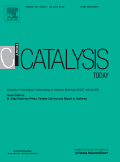
CATALYSIS TODAY
Exploring Breakthroughs in Catalytic ScienceCATALYSIS TODAY is an esteemed journal published by Elsevier, specializing in the vibrant field of catalysis and its applications in chemical engineering. With the ISSN 0920-5861 and E-ISSN 1873-4308, it has continually contributed valuable research since its inception in 1987 and is set to maintain its influence through 2025. Hailing from the Netherlands, this journal stands out with a notable Q2 quartile ranking in catalysis and a Q1 ranking in miscellaneous chemistry as of 2023, reflecting its rigorous selection of impactful and innovative studies. Its Scopus rankings further substantiate its excellence, highlighting its position in the 89th percentile of general chemistry and 77th percentile in catalysis. CATALYSIS TODAY aims to disseminate cutting-edge findings, fostering exchange among researchers, professionals, and students in the catalysis community. By presenting high-quality research articles, reviews, and case studies, it plays a pivotal role in advancing knowledge and sparking discussions that drive future developments in the field.
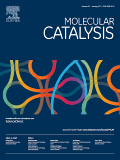
Molecular Catalysis
Advancing the Frontiers of Catalytic ScienceMolecular Catalysis, published by Elsevier in Netherlands, is a premier academic journal that explores the cutting-edge domain of catalytic science. With an impressive impact factor and classified in the top quartiles (Q2) in various fields such as Catalysis, Physical and Theoretical Chemistry, and Process Chemistry and Technology, this journal stands as a significant resource for researchers and professionals committed to advancing the understanding of catalysis processes. Since its inception in 2017, it has been pivotal in publishing high-quality, peer-reviewed research that addresses crucial challenges and innovations in molecular catalysis. The journal is fully Open Access, allowing unrestricted access to its articles, thus fostering a wider dissemination of knowledge. Recognized for its rigorous editorial standards, it features works that push the boundaries of current scientific understanding, making it an essential platform for students and academics alike to share and grow in their expertise.
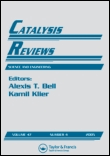
CATALYSIS REVIEWS-SCIENCE AND ENGINEERING
Fostering Excellence in Chemical Engineering and CatalysisCATALYSIS REVIEWS - SCIENCE AND ENGINEERING, published by Taylor & Francis Inc, is a leading journal in the field of catalysis, providing a vital platform for the dissemination of rigorous research and comprehensive reviews from 1968 to the present. With an impressive Q1 ranking in multiple categories, including Catalysis and Chemistry, this journal stands out as an essential resource for professionals, researchers, and students alike. Its high impact factor and esteemed Scopus ranks — including 3rd in Chemical Engineering: Process Chemistry and Technology — highlight the journal's influence and prestige within the scientific community. While primarily a subscription-based publication, the journal’s commitment to advancing the understanding of catalytic processes continues to foster innovation in various industrial applications, making it indispensable for anyone engaged in the fields of chemical engineering and applied chemistry.

ADVANCED SYNTHESIS & CATALYSIS
Catalyzing the future of synthetic chemistry.ADVANCED SYNTHESIS & CATALYSIS is a prestigious academic journal published by Wiley-VCH Verlag GmbH, based in Germany. This journal, with ISSN 1615-4150 and E-ISSN 1615-4169, plays a pivotal role in the fields of Chemistry and Chemical Engineering, earning commendable rankings such as Q2 in Catalysis and Q1 in Organic Chemistry in 2023. Its high impact factor and recognition—ranking #18 in both Organic Chemistry and Catalysis—further underscore its significance as a platform for groundbreaking research and innovative methodologies. Spanning from 1996 through 2024, ADVANCED SYNTHESIS & CATALYSIS aims to disseminate high-quality, cutting-edge studies related to synthetic processes and catalytic technologies, ensuring accessibility via their open access options. By fostering a vibrant scholarly community, this journal serves as an essential resource for researchers, professionals, and students dedicated to driving advancements in synthetic and catalytic chemistry.

CCS Chemistry
Fostering Collaboration in the Chemical Sciences CommunityCCS Chemistry, published by the esteemed Chinese Chemical Society, is a leading open-access journal dedicated to advancing the field of chemistry. Since its inception in 2019, the journal has rapidly gained recognition, achieving a remarkable impact factor that places it in the prestigious Q1 category in Chemistry (Miscellaneous) as of 2023. With a Scopus ranking of #41 out of 408 in General Chemistry, CCS Chemistry represents the top 10th percentile in its category, reflecting its commitment to high-quality research and innovation. The journal serves as a vital platform for researchers and professionals to share their findings, showcase cutting-edge methodologies, and engage with the latest developments in various chemistry subfields. Accessible to a global audience, CCS Chemistry ensures that groundbreaking research is available without barriers, making it an indispensable resource for students and academics aiming to stay at the forefront of chemical sciences. For further details, submissions, and access to published articles, please visit the journal's website.

JOURNAL OF CATALYSIS
Catalyzing Knowledge for a Sustainable FutureJOURNAL OF CATALYSIS, published by Academic Press Inc, Elsevier Science, is a premier peer-reviewed journal that has been at the forefront of research in catalysis since its inception in 1962. With an impressive impact factor and ranking in the top quartiles of both catalysis and physical and theoretical chemistry, the journal is highly regarded, currently holding the distinction of Q1 in both fields. The journal serves as a critical platform for disseminating groundbreaking research, innovative methodologies, and theoretical advancements, making it essential reading for researchers, professionals, and students alike. Although it does not operate under an open-access model, its robust content is accessible through institutional subscriptions, ensuring that significant findings in catalysis and related fields reach a wide audience. With convergence years extending to 2024, JOURNAL OF CATALYSIS continues to shape the discourse in catalysis and chemical engineering, encouraging scholarly exchange and collaboration worldwide.

Catalysis in Industry
Empowering researchers to transform chemical engineering.Catalysis in Industry, published by MAIK NAUKA-INTERPERIODICA, is a pivotal journal in the field of chemical engineering and catalysis. With its ISSN 2070-0504 and E-ISSN 2070-0555, this journal has been dedicated to advancing the understanding and application of catalytic processes in industrial settings since its inception in 2010. Despite its Q4 ranking in the category of Catalysis as of 2023 and a Scopus rank of #61/68, the journal serves as a valuable platform for researchers and practitioners to disseminate innovative ideas and findings that contribute to the evolution of catalysis technology. Published in Russia, Catalysis in Industry aims to bridge the gap between academic research and industrial practice, providing Open Access options to facilitate widespread accessibility and encourage a collaborative approach to chemical engineering challenges. As the industry grapples with the demand for sustainable solutions and efficient processes, this journal remains a critical resource for the academic community, aspiring professionals, and students eager to deepen their knowledge in catalytic applications.